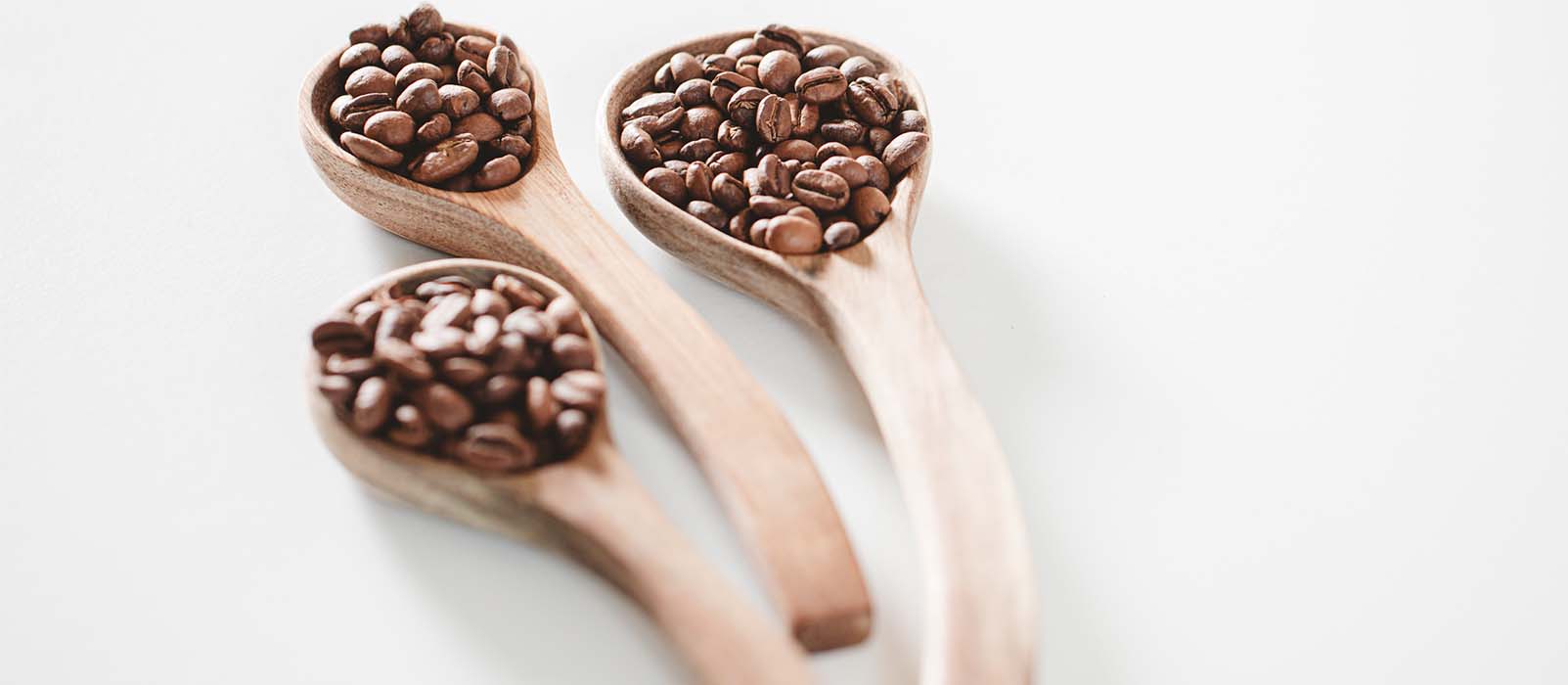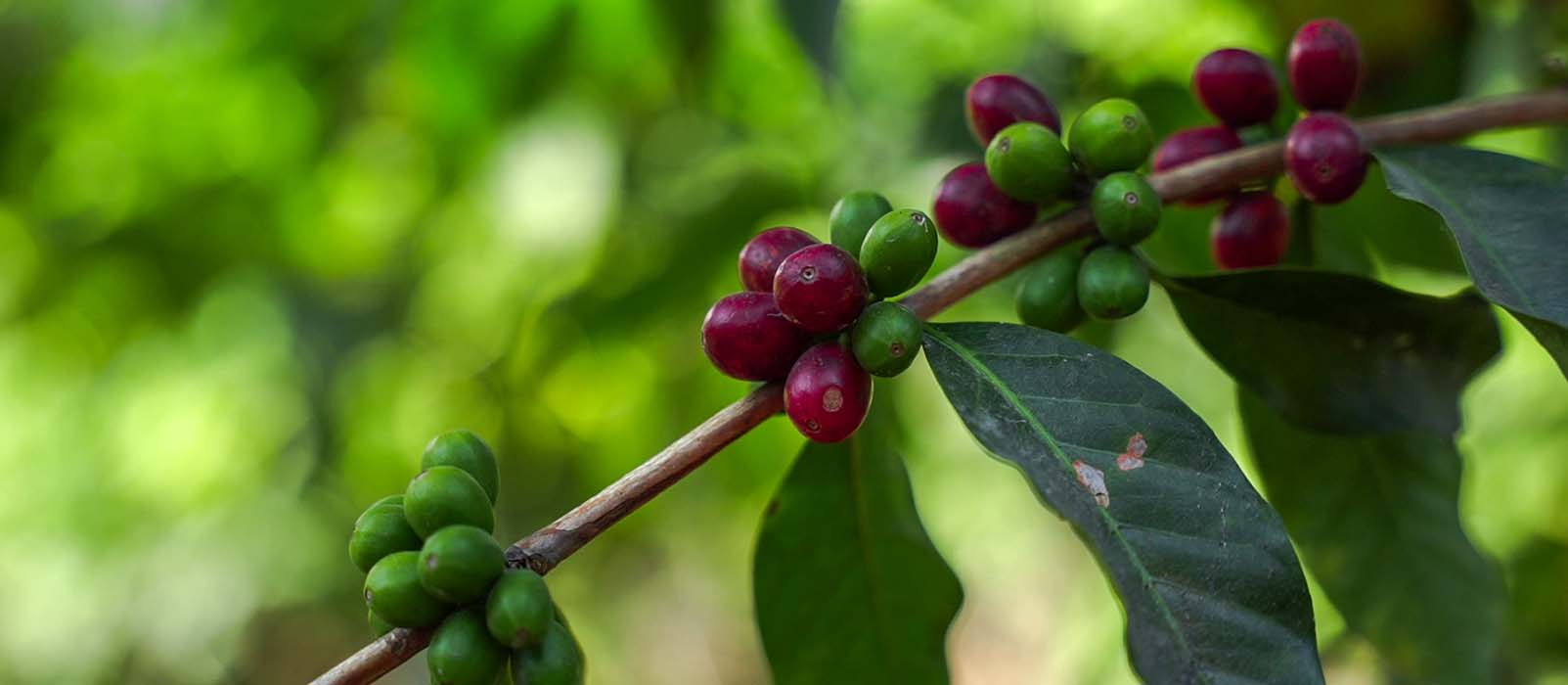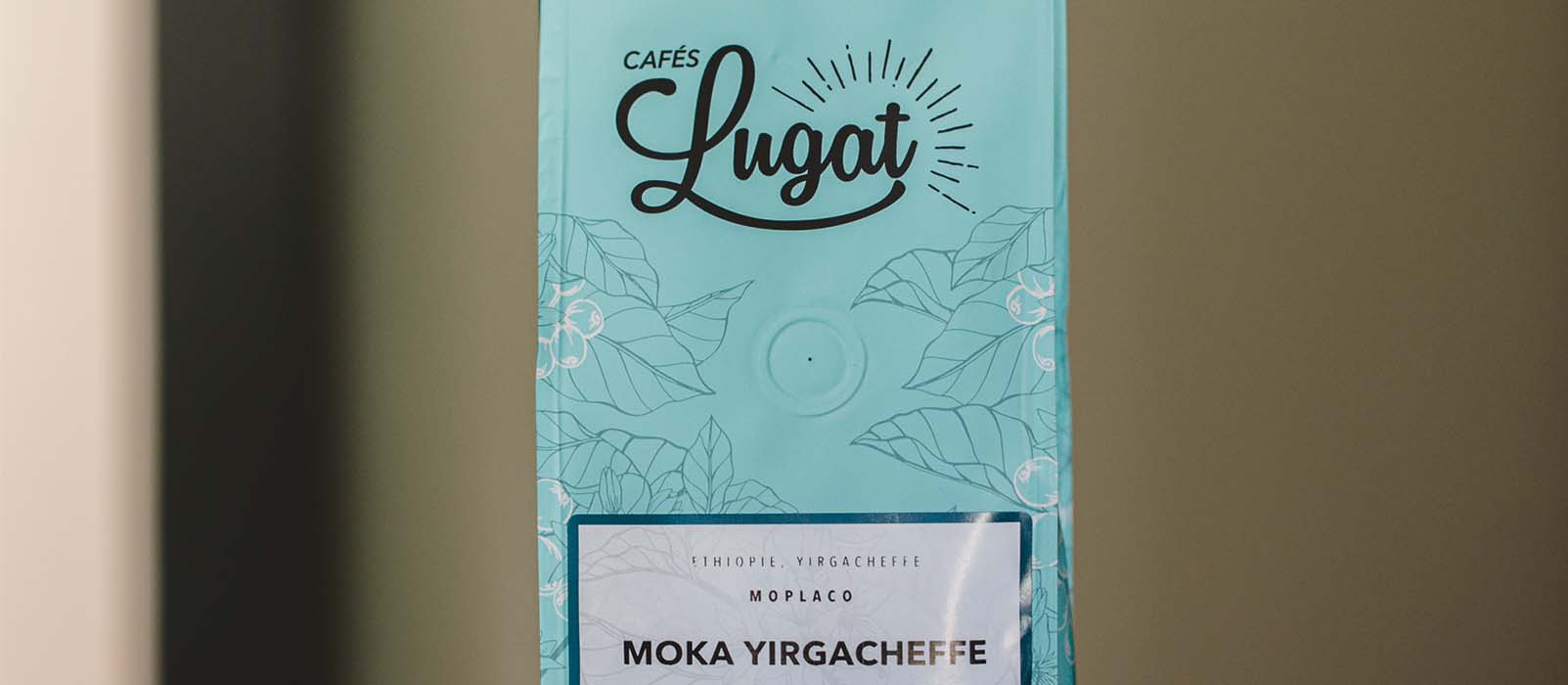
- Home
- Everything you need to know about Ethiopian coffee

Everything you need to know about Ethiopian coffee
Written by Alice
Reading time 6 minDid you know that Ethiopia is both the world’s fifth-largest coffee producer and its birthplace? If you’re intrigued by the rich history and the unique Ethiopian coffee flavour, look no further. This comprehensive guide dives into everything you need to know, from the charming legend of Kaldi the goat herder to the characteristics of Ethiopian coffee cultivation to the country’s diverse coffee-growing regions.
The history of coffee in Ethiopia
The legend of Kaldi the goat herder
Ethiopian coffee history always starts off here. Legend has it that an Ethiopian goat herder named Kaldi was responsible for discovering coffee. While his goats were roaming in the wild, he noticed that they seemed full of energy after eating the berries of a previously unknown shrub: the coffee plant.
The Jebena Buna
In Ethiopia, coffee isn’t just a morning pick-me-up – it’s deeply woven into the culture. The traditional ceremony, known as Jebena Buna, is a beautiful ritual that signifies friendship, respect, and community.
Performed by women, Jebena Buna involves a series of graceful steps:
- Before starting, snacks are offered to the guests.
- To begin, the green coffee beans are washed and then spread out in a mitad, which is a long-handled pot.
- The beans are kept over a low heat and shaken frequently so that they do not burn.
- Next comes the grinding stage: using a bowl, the moo-kehcha, and a pestle, the zenezena, the beans are ground.
- The coffee is then transferred to the jebena, which will be filled with water and placed on the heat until it boils.
- Spices such as cardamom or cinnamon are then added to the mixture.
- The boo-na, the infused coffee, is finally poured into a carafe.
- Once cooled, it is put back in the jebena to bring it to the boil.
This process is repeated three times.
Looking to get your hands on some amazing Ethiopian coffee beans? We’ve got just the selection for you over here.
Where is Ethiopian coffee grown in the country?
Ethiopia boasts a vast and diverse landscape, with numerous microclimates influencing the character of its coffee. As a rule of thumb, if you were to create an Ethiopian coffee region map, remember that coffee thrives in Ethiopia’s mountainous regions, on high plateaus reaching up to a staggering 3,100 meters!
This unique combination of altitude and a tropical climate creates the perfect environment for slow cherry ripening. The result? Complex and distinctive flavour profiles waiting to be discovered in your cup!
MaxiCoffee Coffee spotlight
Beyond its historical and cultural significance, coffee remains a powerful economic driver for Ethiopia.

Where Are Coffee Crops Grown In Ethiopia?
Sidama
Nestled in southern Ethiopia, Sidama is a haven for specialty coffee lovers. Expect vibrant and aromatic coffees boasting fruity or floral notes.
Yirgacheffe
Travel southwest to Yirgacheffe, where world-famous coffees tantalize your taste buds with hints of lemon and delicate florals.
Nekemte
Nekemte is a city located in western Ethiopia. Close to the Sudanese border, this coffee-growing region is marked by a rich environment, where coffee has been grown for centuries. Coffees from this region have a fruity and spicy profile.
Harrar
Harrar is a city located in eastern Ethiopia. It is known for producing “garden” coffee. The coffee beans that are produced in Harrar are often sun-dried, which gives them a distinctive profile, often described as vinous and spicy.
Guji
Guji is a zone located in southern Ethiopia, which is part of the Oromo region and includes about twenty woredas. Relatively new to the specialty coffee scene, this area is nevertheless gaining popularity for its high-quality coffees. Guji coffees often offer fruity and sweet notes, with a bright acidity.
MaxiCoffee Coffee Spotlifht
“Garden coffee” in Ethiopia refers to coffee plots grown near family homes, often on small farms. These coffees are generally produced in a traditional way, on a small scale, and are known for their unique flavours and exceptional quality.
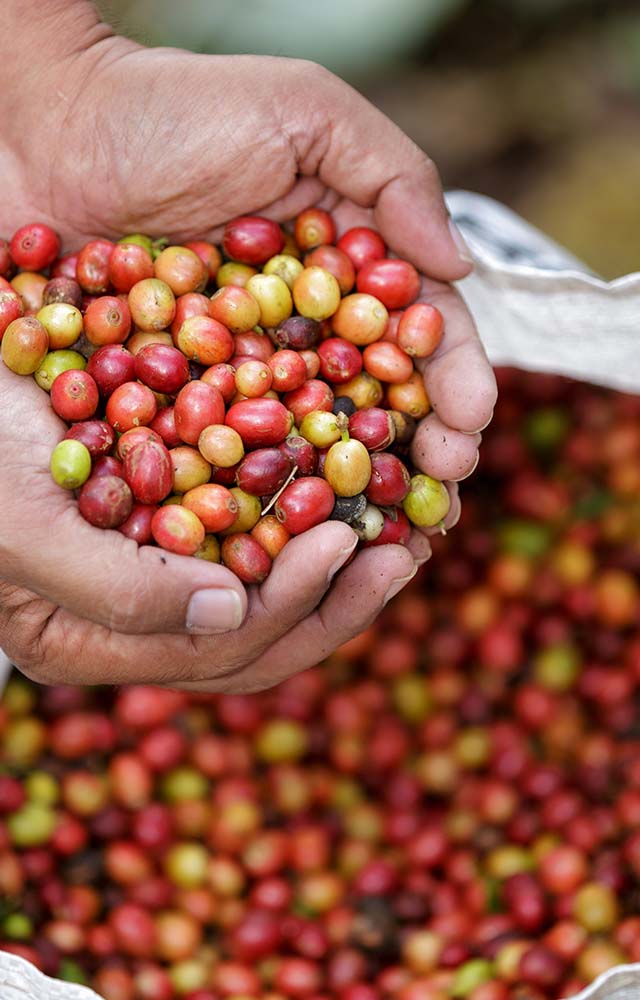
What cultivation methods are used in Ethiopia?
In Ethiopia, coffee is often produced by small producers and small family farms themselves. The quantities produced are small, but extremely high quality, reflecting local cultivation practices and the specific environmental conditions of each region. The producers then sell their lots to washing stations that will take care of the processing and export.
The main Ethiopian coffee production methods are biodynamics and agroforestry. As for picking, it is done exclusively by hand.
Coffee Processing Methods in Ethiopia
Natural method
The natural method begins with hulling, then sorting the cherries in water. The cherries are then stored in their parchment (the shell that surrounds the green coffee bean) before being de-hulled at the time of shipment.
MaxiCoffee Coffee Spotlight
Some regions in Ethiopia also practice the washed method. This method begins with sorting. Once washed, the coffee cherries are then passed through a pulping machine before being placed in tanks to ferment. A final wash and drying finish the process.
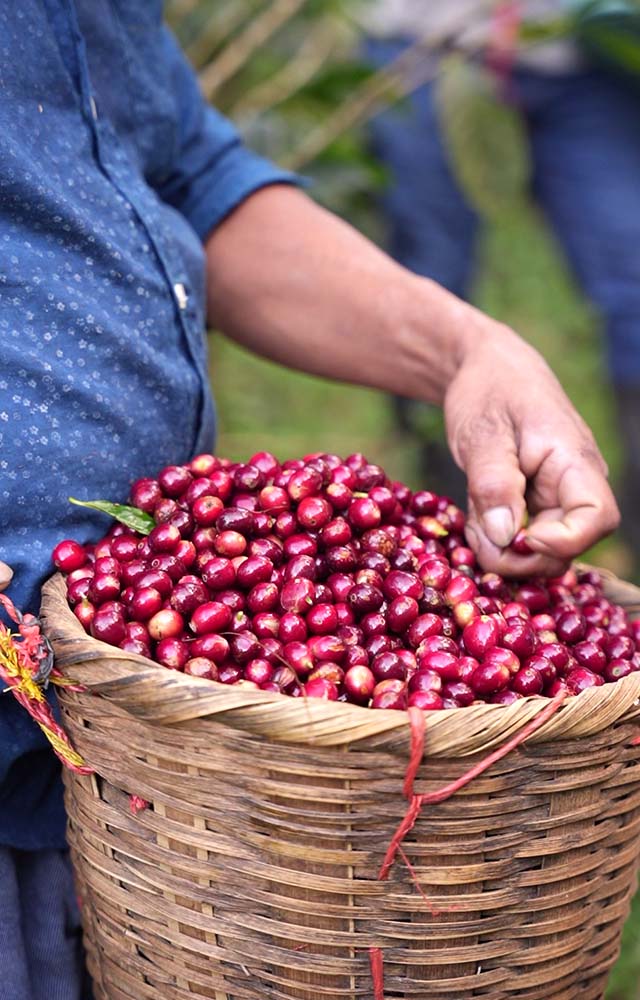
What varieties of coffee are grown in Ethiopia?
The main varieties cultivated are:
- JARC (Jimma Agricultural Research Center)
- Gesha (which originates from the village of the same name, with two specific strains: Gesha 1931 and Gori Gesha)
- 74112
- 74110
- 74114
- Typica
- Wush Wush
- Illubabor Forest
- Kurume
- Welicho
- Sudan Rume
MaxiCoffee Coffee Spotlight
If you see the word “heirloom” on a bag of coffee, be aware that this is not a variety, but a group of Ethiopian endemic varieties (specific to the terroir where it appeared).
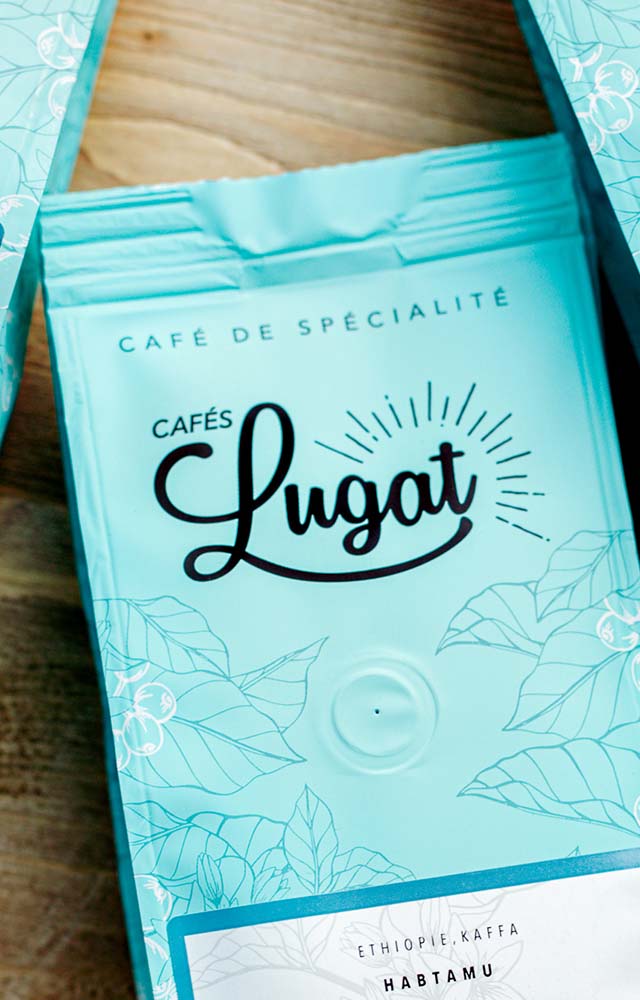
What does Ethiopian coffee taste like, and what are the best Ethiopian coffee beans?
While Ethiopian coffee characteristics vary from one variety to the next, on the whole, it boasts its own unique character. Each region, with its distinct terroir, cultivates beans with their own captivating personalities. Beyond terroir, processing methods and roasting profiles also influence the final cup.
Generally speaking, Ethiopian coffees tend to be on the floral and fruity side of the spectrum. Imagine delicate jasmine notes dancing alongside bursts of citrus – a true explosion of flavour!
Spotlight on Moka Sidamo from Cafés Lugat
Top-of-the-range Ethiopian Moka Sidamo Marabou coffee beans from Cafés Lugat is one of the most renowned Moka coffees, offering a real taste journey. In the cup, you will find a coffee with a slightly acidic taste, with notes of citrus fruits and white flowers, roasted in France and light roasted.
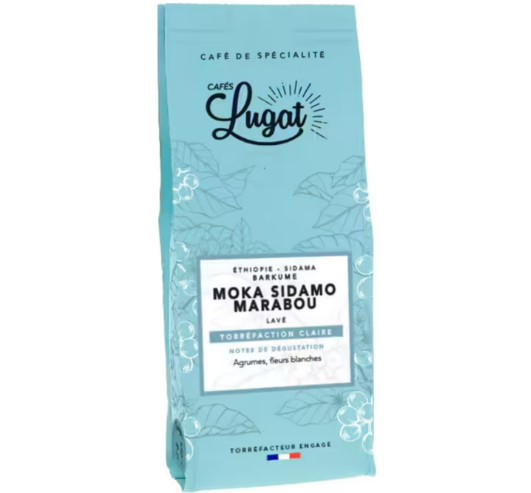
Coffee beans – Moka Sidamo Marabou – Cafés Lugat (250 g)
– Notes: citrus
– 100% Arabica
– Packaging: 250g pack
Ethiopian coffee’s diverse terroirs offer a wide spectrum of flavours. Now that you know everything you need to know about Ethiopian coffee, it’s up to you to try different regions to understand the rich aroma of its terroirs!
Discover our other articles
